
Taming Tassie’s wild west coast
Rugged mountain ranges cut by rainforest-filled valleys. Narrow winding roads made more dangerous by ‘black ice’ in winter. Temperatures that can drop below zero made more miserable by driving rain for much of the year. And then there’s the isolation from major infrastructure.
These factors all combine to make rolling out the nbn™ broadband access network to the west coast of the Apple Isle a logistical nightmare. Though, as NBN Co has done and continues to do in other parts of the nation, such challenges have been overcome and all involved are on the cusp of declaring victory.
The last of three Service Area Modules on the west coast serving the towns of Rosebery, Queenstown and Zeehan is almost complete, signalling another defining moment in NBN Co’s ongoing efforts to connect the nation.
And few are happier about it than Wayne Penfold.
The Launceston-based Project Manager for NBN Co has ridden the ups and downs of efforts to overcome the obstacles put in his team’s way by people and Mother Nature, and he’s the first to admit what a remarkable accomplishment connecting the ‘wild west coast’ has been.
“It’s a particularly challenging environment,” confirms Penfold.
“The remoteness and the difficulty of the build were the reasons it was initially earmarked for satellite.”
On the wild west road
To get a firsthand look at some of the hurdles NBN Co has faced in providing access to fast broadband to this beautiful and equally inhospitable slice of Tasmanian paradise, we recently joined Penfold on a tour of the west coast.
Fixed Line access to broadband in the form of Fibre-to-the-Node (FTTN) technology has been rolled out to the mining towns of Rosebery (population: 708) and Queenstown (1755), with Zeehan (712) not far behind. They are the last pieces of the puzzle that, by the end of 2018, will make Tasmania the first state or territory in Australia to be entirely connected to the nbn™ access network.
Well before we got to this point, though, the decision was made to switch to a Fixed Line build after local residents approached the Federal Government and asked for additional funding to change the rollout from Sky Muster™ satellite to FTTN. They were concerned the area’s challenging weather could have a negative impact on the delivery of services over the Sky Muster™ satellite.
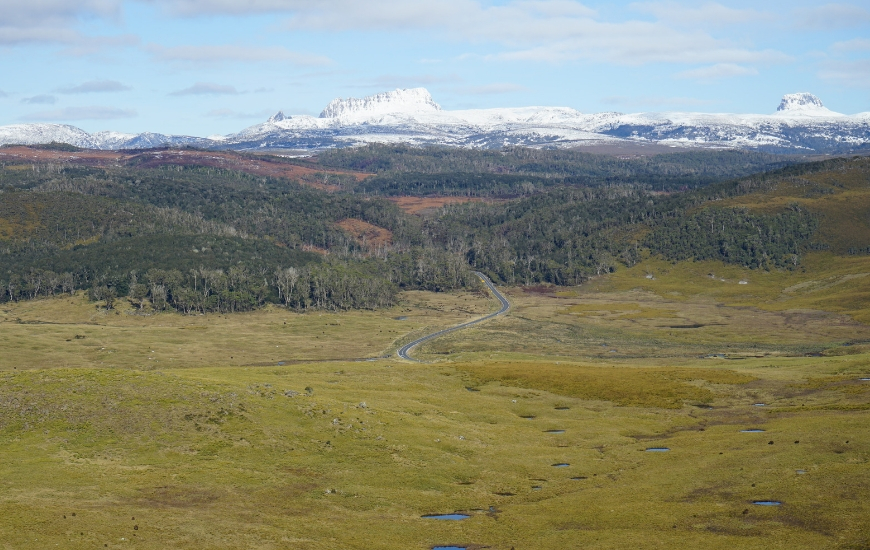
It was at this point that the harsh reality of creating a transit network in such an uncompromising environment began to sink in.
“The west coast experiences up to two metres of rain a year, and frequent snow and ice during winter,” says Penfold.
“Road closures, remediation problems due to the frequent rain, and ice on radio towers all impact the construction effort.”
Building the Fixed Line network
National Manager for Serviceability at NBN Co, Luke Niejalke, was involved in the early days of the transit build and says, historically, a fixed-line transit network has not been available on the west coast.
“Telstra provides services via radio links and has no underground transit infrastructure between Burnie and the west coast.
“This is due to the rugged and remote nature of the geography in the region, and distance from existing underground infrastructure.”
Fortunately, an agreement was reached with the Tasmanian government allowing NBN Co access to the existing TasNetworks Optical Ground Wire fibre that’s part of the Tasmanian power transmission network.
“They’ve got conduit that goes a certain distance and we’ve piggybacked on that to use for our own purposes,” says Penfold.
“It definitely helped us out, because otherwise it was going to be a nightmare to try and build.”
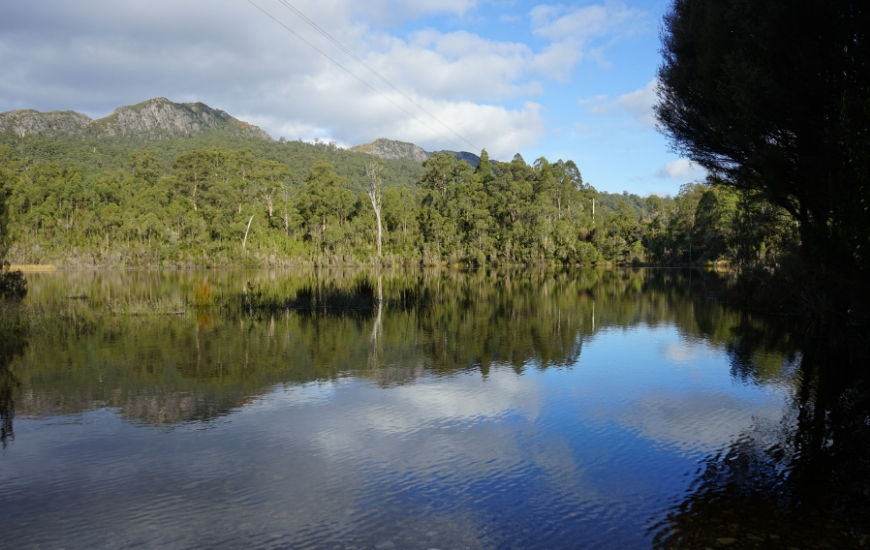
While the arrangement with TasNetworks was a blessing, NBN Co still had to think outside the square.
“The original plan was, in fact, to build a fibre link,” says National Manager for High Care Deployment at NBN Co, Daniel Hoult.
“Visionstream [our Delivery Partner] actually surveyed and started the process of a preliminary design, however, it was determined that the link was virtually ‘unconstructable’ due to the terrain.”
In a first for NBN Co, a 30-kilometre microwave link between Rosebery and Zeehan was deployed instead: an acceleration of new Fixed Wireless transit technology that provides a backhaul solution.
Yet, even with the supporting transit network infrastructure in place, the battle to connect the west coast was only just beginning.
The long and winding road
With no local depot to draw supplies from, everything from conduit to cable had to be trucked up the windy mountain roads all the way from Hobart, more than 300km away.
This made forward planning absolutely crucial.
“We had to make sure we forecast precisely what was needed, otherwise it was going to stall the build,” says Penfold.
Underlining the risks involved were the treacherous roads, often made more dangerous by black ice.
While getting necessities (like node cabinets and fibre) on site was a challenge, incessant rain also made performing what would be considered ‘business as usual’ construction tasks in other parts of the country a sodden challenge.

“It rains 240 days a year, effectively,” says Penfold. “So, obviously, that has had a big impact on the build.”
“The guys try and persist as much as they can, but it gets to a point where you just can’t do any more work.”
Even once construction work is complete, the never-ending rain makes performing reinstatement – returning a site to its original condition – seem like Groundhog Day.
“If we have dug out a road crossing or even just grass on a footpath, for example, with the amount of rain down here, if they finish the work on a Friday, when they come back on the Monday it could be all washed away,” says Penfold.
“So they have to go back and do it again.”
Shifting the strategy
The impact of the weather necessitated a change in strategy.
“We had to change tack a little bit and do a temporary reinstatement until it could be done permanently because the hot mix has to be brought all the way from Burnie on the north coast,” says Penfold.
“You don’t want to just truck it in for one road crossing because that would be very expensive. They wanted to make sure they had done as much as they possibly could so they can just have one truck come down and knock it all over in the one day.”
While logistics, terrain and the weather all played a part in making the build on the west coast difficult, each of the towns involved also has its own character, history and challenges when it comes to bringing their residents into the fold of the nbn™ access network.
Take Queenstown for example.

Nestled in a valley dominated by Mount Owen on one side and Mount Lyell on the other, it was founded in the 1890s following the discovery of gold and, later, copper.
Known today for its gravel footy ground, century-old National Trust-classified staircase (in the foyer of the Empire Hotel), the West Coast Wilderness Railway and The Unconformity arts festival, the town’s truly outstanding feature is the eerie brown ‘moonscape’ of denuded hills that loom over it like a colossus.
Yet, it’s the muddy chocolate colour of the Queen River than runs through the centre of town that draws the attention of NBN Co Field Supervisor Mick Pogorzelski.
Fed by polluted water tainted with the by-products of a century of mining, he says the run-off is having a particularly insidious impact on NBN Co’s hard work.
“It eats into the cables and locks on the FTTN cabinets,” says Pogorzelski. “You have to go around constantly spraying them to try and prevent corrosion.”
“It even corrodes the concrete and discolours it.”
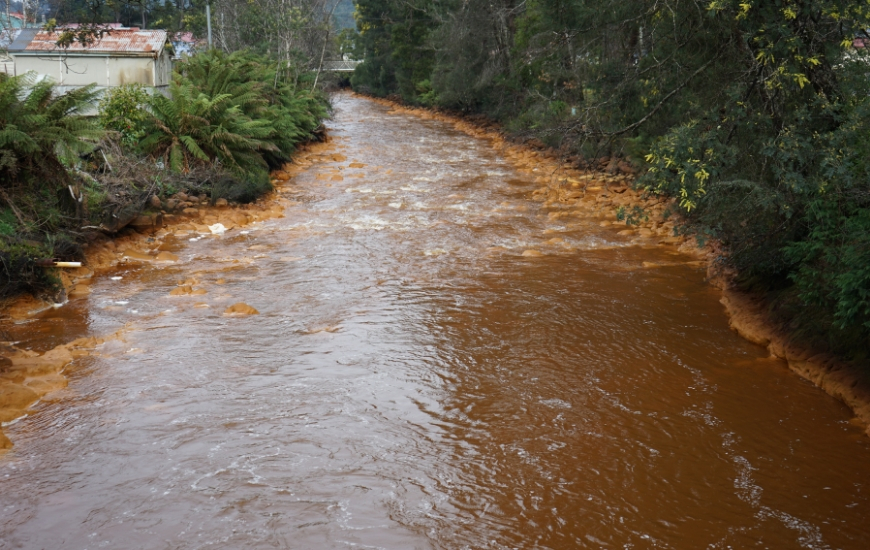
Overcoming murky challenges
An industry veteran who spent 20 years with Telstra before joining NBN Co in 2013, Pogorzelski has the air of a man who’s seen it all when it comes to overcoming the challenges of bringing telecommunication networks to life.
Every week for the past eight months, he has made the windy descent along the Lyell Highway through the moonscape and into Queenstown, after driving up from Hobart to check on the progress of the build.
“At the start, I thought it was going to be an absolute nightmare, but the guys have been out there in the pouring rain because they knew it had to be done,” says Pogorzelski.
“The conditions are pretty harsh but it’s not a chore to be here because everyone’s in it together.”
Just how far the resolve of those working out in the field has been tested is on display when we head 38km up the highway to visit Zeehan.
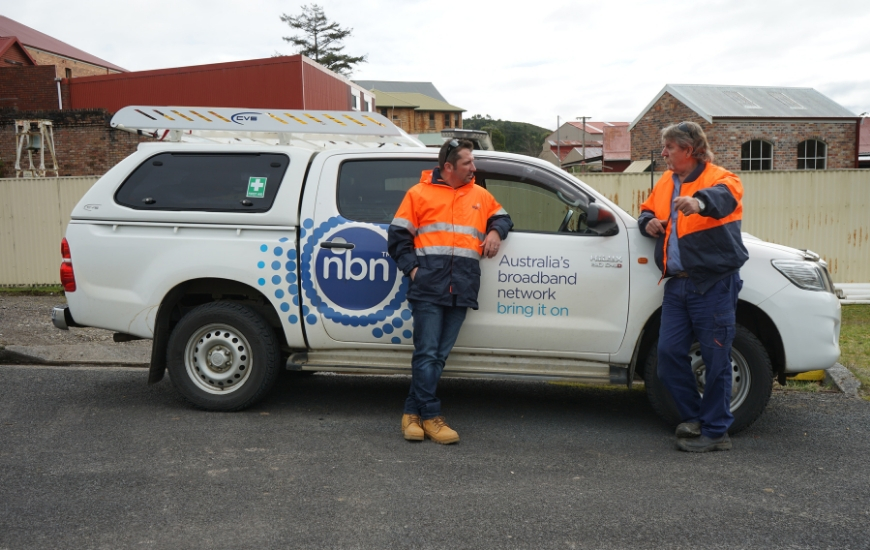
Established overnight following the discovery of silver-lead on the banks of Pea Soup Creek in 1882, the boom town known as “Silver City” once boasted a population of 10,000 residents and 27 pubs.
Despite a couple of mini-mining lead revivals over the years, Zeehan’s glory days are well and truly behind it, with its proud but much diminished population inhabiting a town with more than its fair share of locked and empty buildings.
Zeehan has become notorious to those rolling out the network because of its unique geography.
“Zeehan is like a goldfish bowl,” explains Pogorzelski.
“It’s surrounded by hills and when it rains they act like a funnel, sending the water rushing into town where it settles under the ground because there’s nowhere for it to go.”
Rain, rain and more rain
It’s a reality of which workers, like Gerry Gadd, are very much aware.
On the day we roll in to town, Gadd and colleague Dennis Davidson are fighting a losing battle against the elements while trying to prevent a newly dug pit from becoming waterlogged before they can finish their work.
They have resorted to rotating two 3000-litre water trucks: one to pump out the water from the pit and a second to take over while the first one empties its load.
“It doesn’t just rain here, mate,” says a weary-looking Gadd as he takes a breather and lifts his head from peering into the watery pit.
“It comes at you from the side, it rushes up from underneath the ground and can be so heavy you can’t even see the mountain in front of you. It’s just all rain.
“In the end, you do just have to get out and keep working.”

To call Gadd a ‘west coast local’ would be an understatement. His family has been in Queenstown since the 1800s.
With mining in his blood, it comes as no surprise to him that water isn’t the only obstacle encountered as part of the below-ground nbn™ access network build in Zeehan.
“We do a lot of rock breaking here as well,” says Gadd. “The problem is there is nothing on the dials [scanning] to indicate that the rock is there.
“We have to use a high-pressure hose to blast the dirt away and make sure we don’t hit any assets underground before bringing in a rock breaker.”
Even more water
A couple of streets away, we come across a newly installed micro-node struggling to keep the steadily rising groundwater at bay.
The footpath is so waterlogged that it’s unable to be compacted in its current state.
Pogorzelski breathes deeply and takes note of the situation, just as a local resident approaches at speed and points out how the water has washed away much of the gravel footpath.
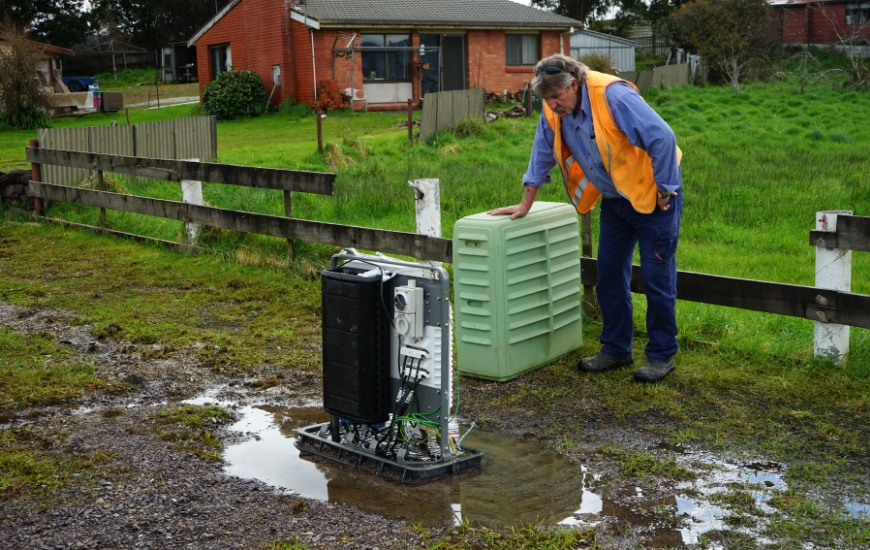
He assures the resident his team will look into it and the situation will be put right once the water subsides enough.
“It’s different here on the west coast,” says Pogorzelski.
“It has been a challenge, but people here haven’t had a very good [internet] service and have been really happy to see us.
“Usually, in some towns, you can get a rougher reception, but everyone has been really welcoming to us. Yes, it’s hard, but they are happy to see us working and excited about the fact they are getting a service that will be better than they are used to.”
Better days ahead
Local Sarah Myers has no doubt things can only get better in the connectivity stakes.
For one thing, she hopes saying farewell to the constant dropouts that are a feature of the current ADSL service will help make running Queenstown’s Silver Hills Motel a lot easier.
“[We hope that] we’ll be able to run the office system faster and guests will have better internet access,” says Myers.
“There are also no more ADSL ports left in town, either, so we’re hoping [the nbn™ access network] will make things much better.”
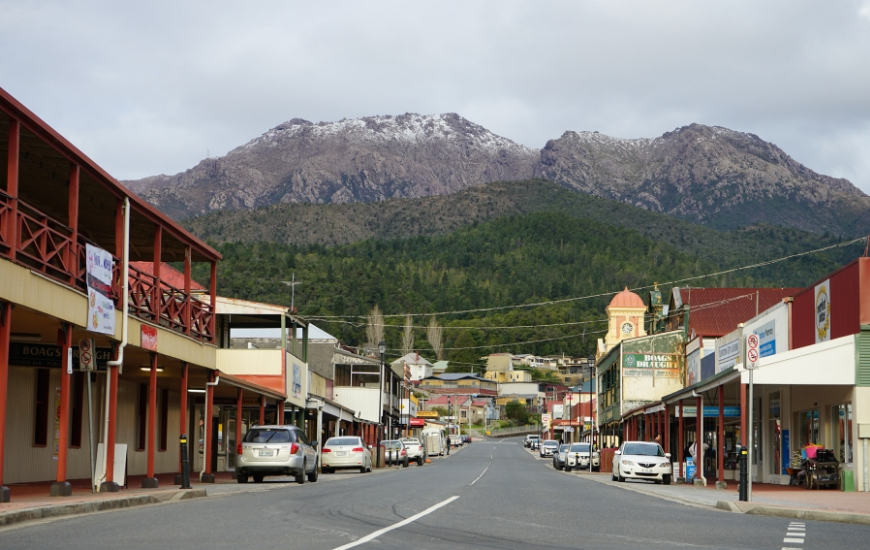
While personally looking forward to watching Netflix at home while her 14-year-old stepson enjoys online gaming, Myers hopes the arrival of the nbn™ access network will provide a boost to Queenstown’s economy.
“With the mine set to reopen in March, we’re hoping that people who move to the area will use broadband services over the nbn™ access network.
“A lot of people are starting to use technology as ‘their workplace at home’ so, hopefully, it will open up new opportunities.”
If new statistics contained in the recently released Australian Digital Inclusion Index report are anything to go by, the wild west coast may be in for a wild digital ride.
A look at the numbers
The study, which is a measure of digital access, affordability and ability, reveals Tasmania recorded an eight-point surge in digital inclusion in line with rapid uptake of fast broadband services coinciding with the nbn™ access network rollout, which is now almost complete in the state.
West Coast Council Mayor Phil Vickers needs no convincing.
“Being connected [to the nbn™ access network] puts the west coast on the same playing field as other [regional] parts of Australia. It will allow improvements in essential services, health, education. It will also help business, such as our mining industry, better compete.
“It gives us a real chance to improve our sustainability long-term.”
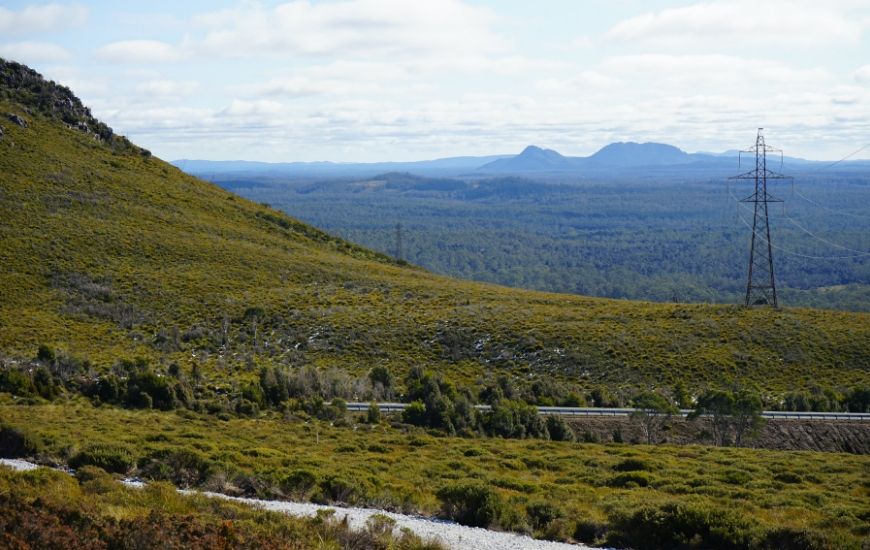
Vickers, who played a key role in ensuring the west coast was connected by Fixed Line, acknowledges the logistics of the rollout have been difficult, especially the inclement weather.
“Our rainfall is 2.5 metres per year. In the past 70 days, we have had only four days without rain.”
Despite this, he says the rollout has marched on without delay.
“The community has accepted the logistical problems with no complaints,” says Vickers.
He also adds that the council and NBN Co have had an excellent working relationship.
“nbn™ local Manager [for Tasmania] Russell Kelly has been an exceptional communicator and a great help to us achieving our desired outcome.”
As for Pogorzelski, despite spending up to 1400km a week behind the wheel, as well as putting up with the driving rain, spotty mobile reception and myriad construction challenges, he’s immensely proud of what NBN Co has accomplished.
“I’d like to think kids here could be given the same opportunities as kids in the big cities,” says the father of five.
“It’s a pretty big achievement, I reckon, not just here on the west coast of Tasmania, but right around Australia.
“I think it’s a feather in everybody’s cap to say, ‘I was part of it: one of the largest and most complex infrastructure initiatives in the country.’”

